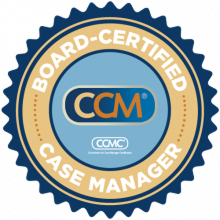By Demetria Rutledge, APRN-C, FNP, CCM
The moments following a patient’s hospital discharge are among the most vulnerable in the entire continuum of care. After the intensive oversight of inpatient treatment, patients often return home to manage complex instructions, new medications, and lingering uncertainty. Without structured follow-up, even the most successful hospital interventions can unravel, leading to preventable readmissions and setbacks. A deliberate, well-coordinated transition of care process—anchored in timely follow-up with the medical team—is essential to preserving progress and ensuring safe, sustained recovery.
The Fragile Bridge Between Hospital and Home
Discharge is not the end of care—it is a pivotal transition requiring clarity, communication, and continuity. When hospitals fail to effectively bridge the gap between inpatient and outpatient management, patients may fall through the cracks of an increasingly fragmented healthcare system. A strong transition begins before discharge, with proactive planning, thorough communication, and engagement of all stakeholders. Physicians, nurses, case managers, and pharmacists must work in concert to ensure every patient leaves the hospital with:
- A clear understanding of their condition and care plan.
- Accurate medication instructions and reconciled prescriptions.
- A confirmed follow-up appointment with the appropriate provider.
This comprehensive approach reduces confusion, strengthens patient confidence, and sets the stage for safe recovery.
Why Post-Discharge Follow-Up Matters
Follow-up care—typically within seven to fourteen days of discharge—is a decisive factor in patient outcomes. Early engagement allows clinicians to detect complications before they escalate, adjust medications, and reinforce adherence to treatment plans. In-person visits, phone calls, or telehealth check-ins all play a role. What matters most is timeliness and teamwork. The follow-up visit is not a mere formality—it’s a continuation of the therapeutic alliance formed during hospitalization.
These encounters provide opportunities to:
- Monitor for recurrence or new symptoms.
- Review test results pending from the hospital stay.
- Clarify instructions, reduce anxiety, and support self-management.
Patients who receive coordinated post-discharge follow-up report higher satisfaction, fewer emergency visits, and improved confidence in managing their conditions.
Reducing Readmissions Through Collaboration
Hospital readmissions continue to be a costly and quality-sensitive issue across healthcare systems. Many are preventable when transitional care processes are executed effectively. Collaborative models—such as Hospital at Home programs, Nurse navigator programs, transitional care clinics, and home-based follow-ups. These programs demonstrate significant success in reducing avoidable returns to the hospital. When communication flows seamlessly among hospitalists, primary care providers, and specialists, patients benefit from unified messaging and continuity of treatment. This interdisciplinary coordination is the hallmark of high-performing systems focused on value-based outcomes.
Technology: The New Enabler of Continuity
Digital tools are transforming the landscape of transitional care. Electronic health records (EHRs) facilitate real-time information sharing, while patient portals empower individuals to access discharge summaries, lab results, and educational materials. Telehealth further bridges distance and accessibility gaps, particularly for those with mobility challenges or limited transportation. When used thoughtfully, technology enhances—not replaces—the human connection that defines effective care. The blend of digital access and personal follow-up represents the future of transition management.
Empowering the Patient as a Partner
An empowered patient is the strongest safeguard against post-discharge complications. Education, delivered in clear and compassionate language, enables patients and caregivers to recognize warning signs early and act decisively. Healthcare teams that prioritize communication, encourage questions, and foster patient confidence cultivate trust—and trust is the foundation of adherence, engagement, and lasting wellness.
Conclusion
Transition of care is not a single event—it is a continuum that extends beyond the hospital walls. When discharge planning and follow-up are treated as integral components of the care process, the results are unmistakable: fewer readmissions, better outcomes, and stronger relationships between patients and their care teams. As healthcare continues to evolve toward integrated, patient-centered models, the focus on safe, coordinated transitions must remain unwavering. The bridge from hospital to home is where recovery truly takes root—and where the commitment to healing must continue.



